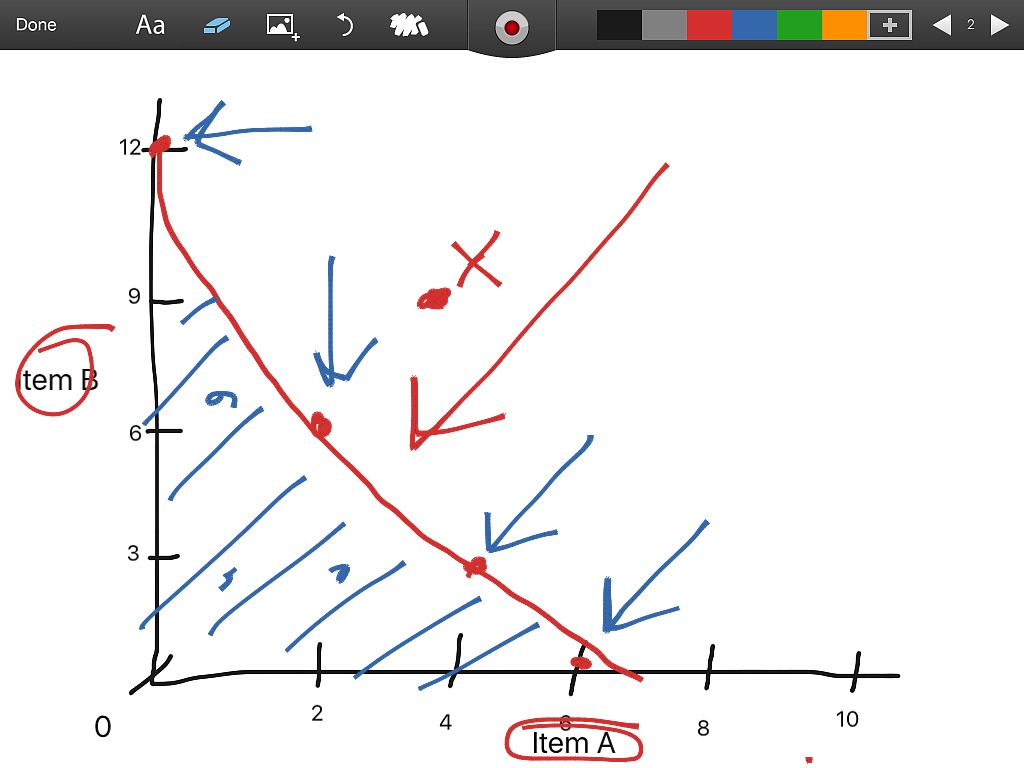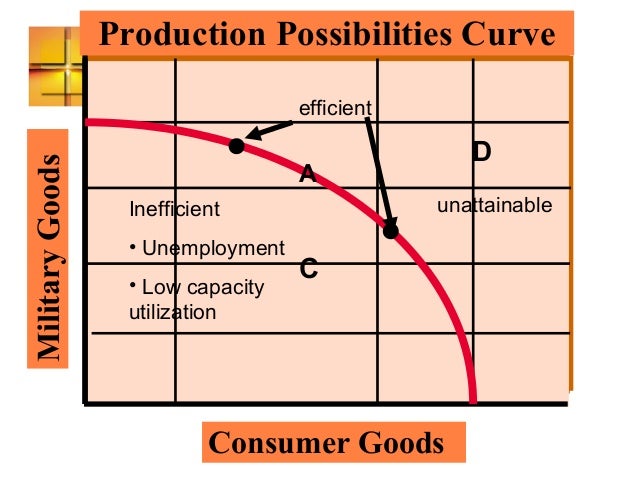

Because the PPF is downward sloping from left to right, the only way society can obtain more education is by giving up some healthcare. Suppose society has chosen to operate at point B, and it is considering producing more education. Most important, the production possibilities frontier clearly shows the tradeoff between healthcare and education. But it does not have enough resources to produce outside the PPF. Society can choose any combination of the two goods on or inside the PPF. In effect, the production possibilities frontier plays the same role for society as the budget constraint plays for Alphonso. Alternatively, the society could choose to produce any combination of healthcare and education shown on the production possibilities frontier. If it were to allocate all of its resources to education, it could produce at point F. But it would not have any resources to produce education. If the society were to allocate all of its resources to healthcare, it could produce at point A. In, healthcare is shown on the vertical axis and education is shown on the horizontal axis. At D most resources go to education, and at F, all go to education. At A all resources go to healthcare and at B, most go to healthcare. This production possibilities frontier shows a tradeoff between devoting social resources to healthcare and devoting them to education. This situation is illustrated by the production possibilities frontier in. Suppose a society desires two products, healthcare and education. As you read this section, focus on the similarities.īecause society has limited resources (e.g., labor, land, capital, raw materials) at any point in time, there is a limit to the quantities of goods and services it can produce. There are more similarities than differences between individual choice and social choice. This section of the chapter will explain the constraints faced by society, using a model called the production possibilities frontier (PPF). Just as individuals cannot have everything they want and must instead make choices, society as a whole cannot have everything it might want, either. Contrast productive efficiency and allocative efficiency.Explain the relationship between a production possibilities frontier and the law of diminishing returns.Contrast a budget constraint and a production possibilities frontier.Interpret production possibilities frontier graphs.Helps in guiding the movement of resources from producer goods to capital goods, such as machines, which, in turn, increases the productive resources of a country for achieving a high production level.By the end of this section, you will be able to: On the other hand, private sector goods are manufactured by privately owned organizations and are purchased by individuals at a certain price.
#Labeled production possibility curve free
These goods are free or involve a negligible cost. The public sector goods are supplied and financed by government, such as public utilities, free education, and medical facilities. Helps a democratic nation to focus and shift a major amount of resources in the production of public sector goods instead of private sector goods. Enables the planning authority of a developed nation to divert the usage of its resources for the production of necessary goods to the production of luxury goods and from consumer goods to producer’s goods, after a certain point of time.
#Labeled production possibility curve how to
Production possibility curve not only provides solutions for production problems, such as what to produce and how to produce, but can be used for various purposes. Due to this transformation, the curve of production possibility is concave in nature. For example, in case of A and B, the amount of B that is sacrificed to produce A is termed a marginal rate of transformation. The rate at which a product is transformed into another product by sacrificing the amount of one product for the other is called marginal rate of transformation. Production possibility schedule can also be termed as production transformation schedule.

In Figure-1, the production possibility point’s g and h are attainable combinations, whereas c and e are unattainable combinations. Now, we can plot this table on a graph to obtain production possibility curve, which is shown in Figure-1: In between these cases, there are several points where A and B both are manufactured simultaneously. This is because all the resources are utilized in manufacturing one good. Similarly, when the quantity of B reached 20 000 then the quantity of A is zero. In Table-1, it can be seen that when A has the quantity of 6000, then B has not been producer at all. Table-1 shows different combinations of A and B produced by an organization:


 0 kommentar(er)
0 kommentar(er)
